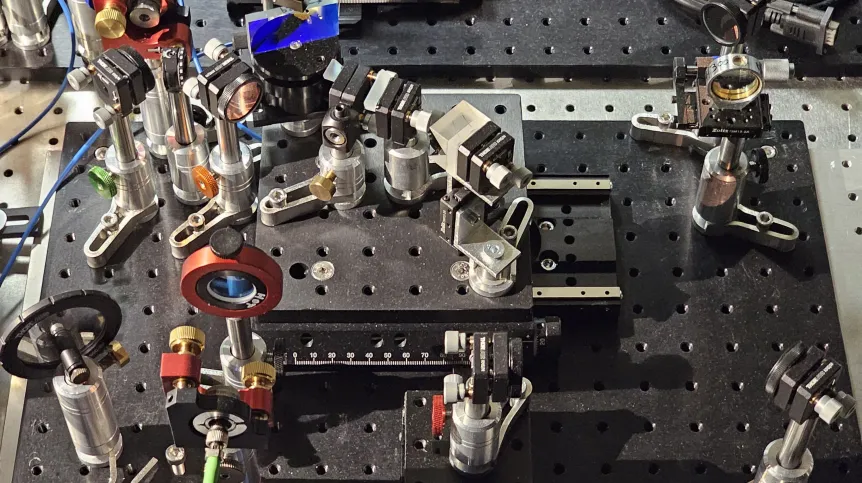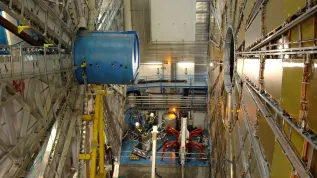
Researchers working at the University of Warsaw have developed a quantum-inspired super-resolving spectrometer for short pulses of light.
The device designed at the Quantum Optical Devices Lab, Centre for Quantum Optical Technologies, Centre of New Technologies and Faculty of Physics UW offers, over a two-fold improvement in resolution compared to standard approaches.
In the future, the spectrometer can be miniaturised on a photonic chip and applied in optical and quantum networks, and in spectroscopic studies of matter. The research has been published in the journal Optica.
WHAT SPECTROSCOPY IS ALL ABOUT
The task of spectroscopy is to study the various colours, that is, the spectrum of light. A chemical substance will emit characteristic colours that can be used to identify it. Similarly, a distant star will also have a specific spectrum of light that reveals its astrophysical properties such as its chemical composition, and consequently its size and age
Spectroscopy is also important in telecommunications. Different colours of light are used to transmit information over channels in fibre networks (just like different radio bands are used to transmit many channels at the same time). These optical channels are at the core of intercontinental optical networks; they are also essential for future secure quantum networks.
In all those cases, a challenge is to distinguish close-by channels or spectroscopic lines. The consensus was that if channels overlapped, they would be almost impossible to distinguish. This property was later named the Rayleigh criterion.
HELP FROM THE QUANTUM WORLD
Progress in quantum computing has allowed us to understand that the traditional direct imaging or spectroscopy discards part of the information. Quantum-inspired super-resolution techniques transform the complex electromagnetic field before it is detected to optimally use this latent information.
The working principle of the device called SUSI (Super-resolution of Ultrafast pulses via Spectral Inversion) is very similar to the so-called quantum-inspired super-resolution methods in imaging. The greatest challenge was to translate these ideas to the realm of time and frequency.
FLIP THE IMAGE
In super-resolved quantum imaging, the light coming from the object is split into two arms of an interferometer. One arm contains a device which inverts the image. Then the inverted part interferes with the original one.
It the emitter is be moved, its inverted image becomes different from the original one and photons will appear in that port. Their number is a very good indicator of how much the emitter has been moved. This makes it possible to measure the separation between two emitters. It turns out that this precision can be significantly better than directly imaging the emitters with a camera.
MANIPULATIONS
But how can we implement inversion over the frequencies? Solving this problem was a crucial step in designing SUSI. A fundamental observation was that instead of placing an inverter in a single interferometer arm, the same result can be obtained with a Fourier transform in one arm and an inverse Fourier Transform in the second arm.
According to the researchers from the University of Warsaw, this design creates a very balanced and scalable device, which has been built by the doctoral candidate Michał Lipka under the supervision of Dr. Michał Parniak from the university’s Faculty of Physics.
Both arms of the interferometer have comparable losses, and the devices for the inverse and direct Fourier transform are very similar.
In addition, all SUSI interferometer components can be implemented on a photonic chip, meaning that SUSI can be applied and integrated in super-spectrometers or devices for optical networks, providing at least a two-fold improvement in the resolution compared to current devices.
Consequently, the research, which has been funded by the National Science Centre via a PRELUDIUM grant, promises exciting applications.
Scientists from the University of Warsaw predict that the new device will find applications in telecommunications, matter research or astronomical research.
The project 'Quantum Optical Technologies' (MAB/2018/4) was carried out as part of the International Research Agendas programme of the Foundation for Polish Science, and the device was created thanks to funding from the Polish National Science Centre (PRELUDIUM grant).
Full information is available on the Faculty of Physics of the University of Warsaw website.
PAP - Science in Poland
lt/ agt/ kap/
tr. RL













